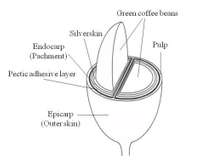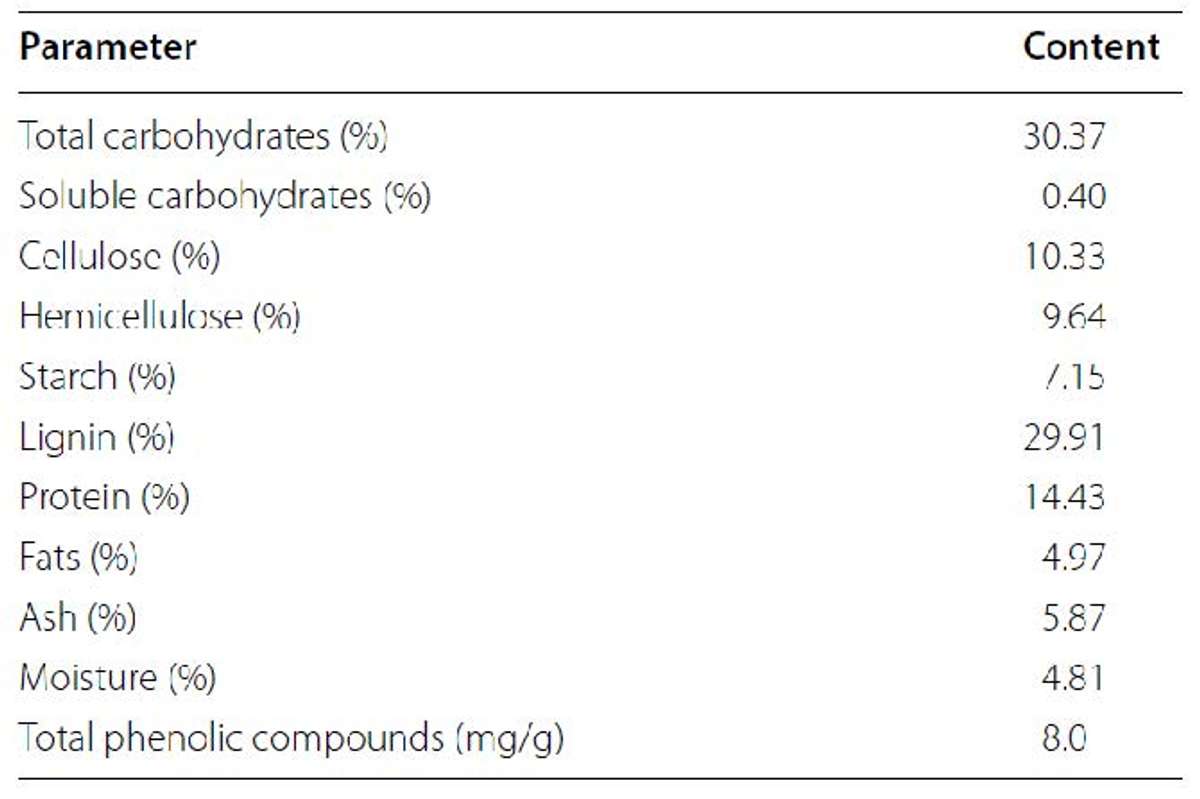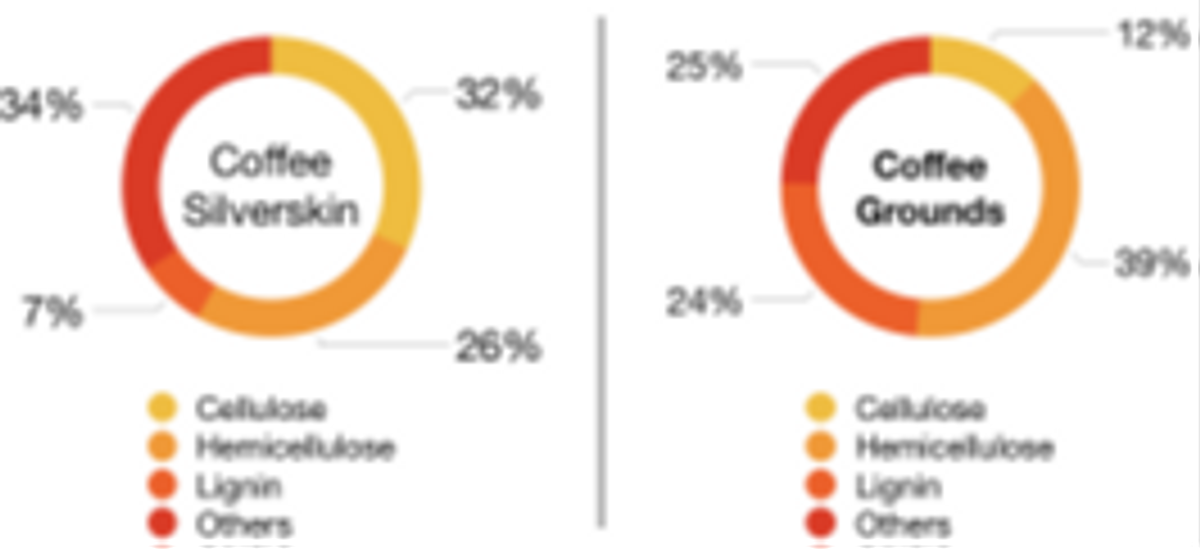
Coffee silverskin is high in nutrients, but contains recalcitrant and phytotoxic compounds, limiting its use as a mulch or soil amendment. Fortunately, composting can reduce or eliminate these problems.
Composition

Figure 1. Components of the coffee cherry. (Narita and Inouye 2014)
Coffee Silverskin (CS) is the membrane surrounding the coffee bean which separates from the bean during roasting (Figure 1). More-exterior layers, from endocarp outward, are removed prior to roasting, during coffee cherry processing. Thus, CS is the predominant waste created during bean roasting.
Figure 2. Composition of Coffee Silverskin and Spent Coffee Grounds (Malara et al 2018)
CS is largely composed of lignin, cellulose, and hemicellulose, probably in the form of a lignocellulosic matrix (Carnier et al 2019). Composition varies with the type of coffee and growing conditions. Examples of the varying composition are illustrated in Figure 2 and Table 1.
CS is high in nutrients, including N, P, K and a variety of micronutrients (Table 2). However, CS is also known to contain a number of potentially phytotoxic compounds including phenolics, chlorogenic acid, and caffeine (Gonzalez-Moreno et al 2020, Picca et al 2022). Some CS compounds also exhibit anti-fungal properties and CS extract has been proposed as an alternative wood preservative (Barbero-Lopez et al 2020).

Table 1. Composition of Coffee Silverskin dry mass. (Hijosa-Valsera et al, 2018)
CS as Soil Amendment or Mulch
The high nutrient content suggests that CS could be used as a fertilizer or soil amendment. However, it appears that the nitrogen is primarily bound in highly recalcitrant lignocellulosic compounds. The lack of available N means CS should not be considered a fertilizer or soil amendment (Carnier et al 2019).
Table 2. Example Nutrient Content of CS (adapted from Gonzalez-Moreno et al 2020)
|
Parameter |
w/w % |
|
TKN |
5.1 |
|
Organic N |
4.6 |
|
P |
0.4 |
|
K |
3.3 |
|
Ca |
2.2 |
|
Mg |
0.8 |
|
S |
1.2 |
|
Fe |
0.15 |
The lignocellulosic content of CS should not pose a problem if used as a mulch. However, the phytogenic properties of some CS compounds suggests that heavy use of CS as a mulch should be avoided (Gonzalez-Moreno et al 2020, Picca et al 2022).
Fortunately, composting has been shown to degrade the phytogenic compounds in CS, providing a route for safely returning CS nutrients to the soil. Picca et al (2022) have shown that composting with garden prunings and biochar eliminated phytotoxicity while making nitrogen readily available. Gonzalez-Moreno et al (2020) demonstrated a similar outcome with vermicomposting. However, they noted that CS can be toxic to worms in high concentration.
References
Barbero-López, A., Monzó-Beltrán, J., Virjamo, V., Akkanen, J., & Haapala, A. (2020). Revalorization of coffee silverskin as a potential feedstock for antifungal chemicals in wood preservation. International Biodeterioration & Biodegradation, 152, 105011.
Carnier, R., Berton, R. S., Coscione, A. R., Pires, A. M. M., & Corbo, J. Z. (2019). Coffee silverskin and expired coffee powder used as organic fertilizers.
González-Moreno, M. A., García Gracianteparaluceta, B., Marcelino Sádaba, S., Zaratiegui Urdin, J., Robles Domínguez, E., Pérez Ezcurdia, M. A., & Seco Meneses, A. (2020). Feasibility of vermicomposting of spent coffee grounds and silverskin from coffee industries: A laboratory study. Agronomy, 10(8), 1125.
Hijosa-Valsero, M., Garita-Cambronero, J., Paniagua-García, A. I., & Díez-Antolínez, R. (2018). Biobutanol production from coffee silverskin. Microbial cell factories, 17(1), 1-9.
Malara, A., Paone, E., Frontera, P., Bonaccorsi, L., Panzera, G., & Mauriello, F. (2018). Sustainable exploitation of coffee silverskin in water remediation. Sustainability, 10(10), 3547.
Narita, Y., & Inouye, K. (2014). Review on utilization and composition of coffee silverskin. Food Research International, 61, 16-22.
Picca, G., Plaza, C., Madejón, E., & Panettieri, M. (2022). Compositing of coffee silverskin with carbon rich materials leads to high quality soil amendments.
